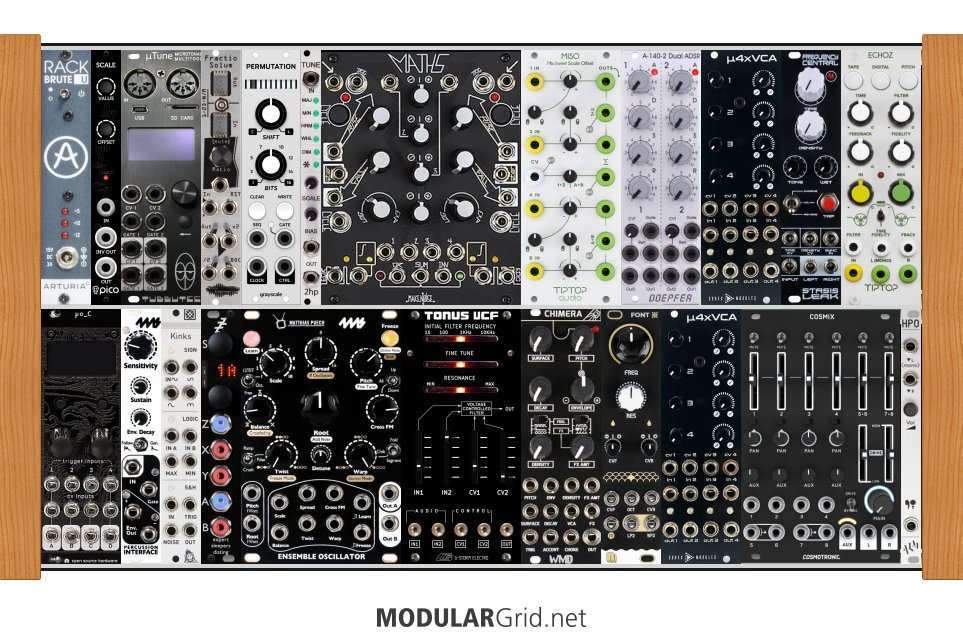Did a little screwing around with the last version, came up with this:

The big thing you'll notice is that everything's been reordered. I immediately moved to get audio sources away from the P/S module. So the MScale is next to that on the top row, followed by the MIDI interface. The top row was then swapped out so that all control voltage and modulation sources and manipulators are up there now.
After the MIDI interface, I swapped the divider for a more capable CVable divider/multiplier. The 2hp TM was switched out for a real Turing-style sequencer (Permutations) which also now has its own quantizer. Then Maths, and after that I swapped the expensive U-He CV manipulator with its memory and menu diving for a much cheaper and more playable MISO. A Doepfer Dual ADSR now provides proper envelope generation for VCAs and VCFs, then I switched the Zlob VCA module for a Codex Modulex clone of Veils, which loses two VCAs but gains the variable response curves on all VCAs.
Then the effects modules were switched out for various reasons (we'll get to an important one in a bit), giving you a stereo chorus/tap delay/reverb and a stereo delay in a tighter space...but not so tight that there'd be ergonomics issues.
Lower row: I put the o&C below the P/S for the same reasons as above. Then the Percussion Interface, which keeps it away from the P/S as well. Kinks is next, then we get into the actual audio path, starting with the Disting. Next is the Ensemble Oscillator, followed by a much better VCF pick, the G-Storm ARP 4012 module which replicates the Rev.1 ARP 2600 VCF, plus it provides a 2-in mixer to sum the Ensemble Oscillator's outputs down to mono. Then the Chimera and Font were paired up next.
Now, the mixer section. Another Veils clone for individual VCA level control to your mono mixer inputs. The mixer is now a Cosmotronic Cosmix, which gives you four PANNABLE mono ins, plus a mono AUX send and two stereo inputs with no AUX. Now, remember the bit with the effects? Both the Frequency Central AND Tiptop modules take a mono input and output stereo...which is perfect for feeding them BOTH with a split AUX cable, then you can parallel-mix them back in via the dual stereo ins. This is a MUCH better and more controllable method for treating effects, plus you now have a proper stereo output with the effects where they belong in the signal chain. And the HPO's at the end, and you can Y-split its inputs off of the Cosmix's stereo out.
Chucked out: the Bernoulli gate (didn't see the need for it), the Links (this build is too small for a dedicated mult; use inline passives instead when needed), and one or two other minor things, all of which got pulled to increase available panel space for superior functionality. Also, I made sure to keep suitable room throughout the build so that there weren't any space issues of consequence around the major "performance" controls. And for the cherry on the cake, I got it in for $400 less!
